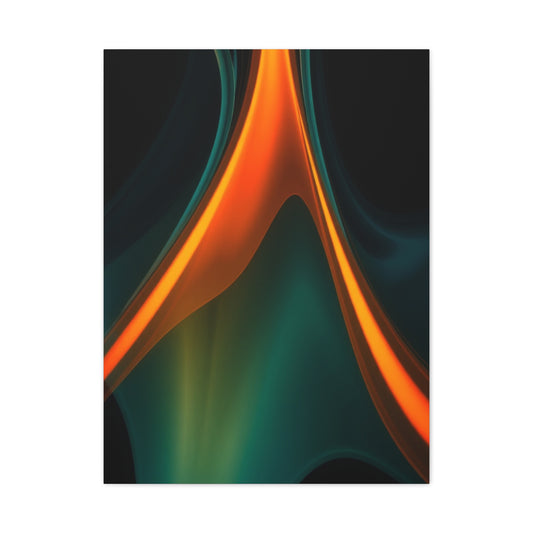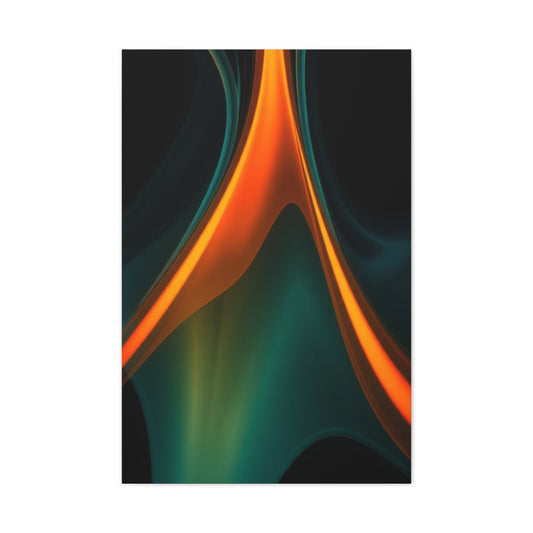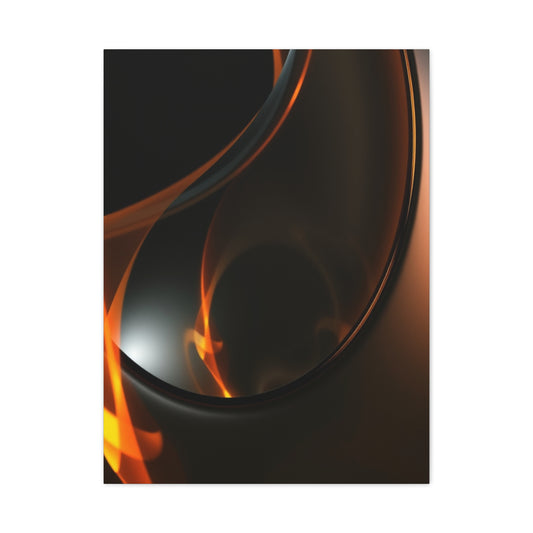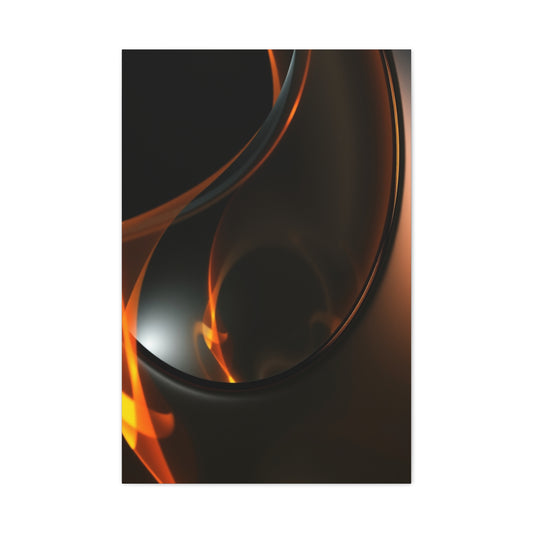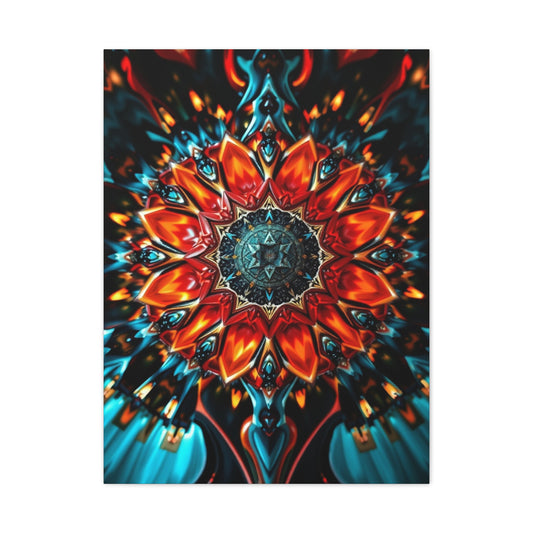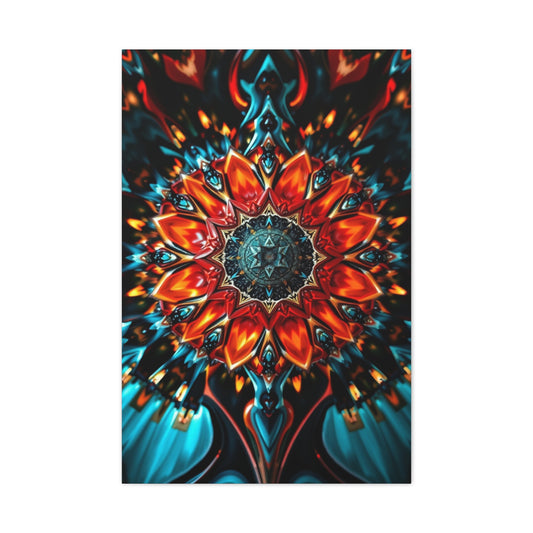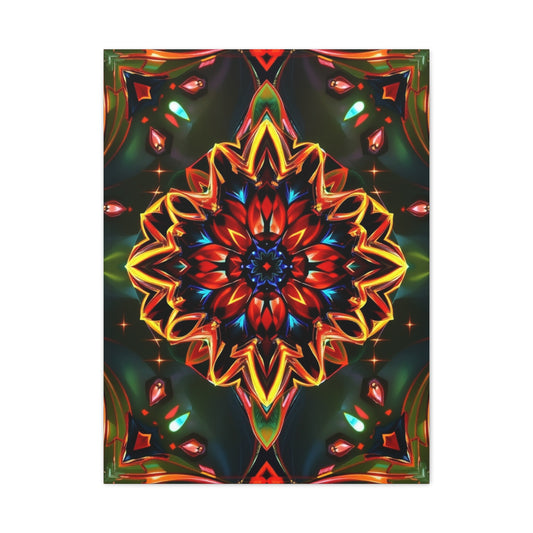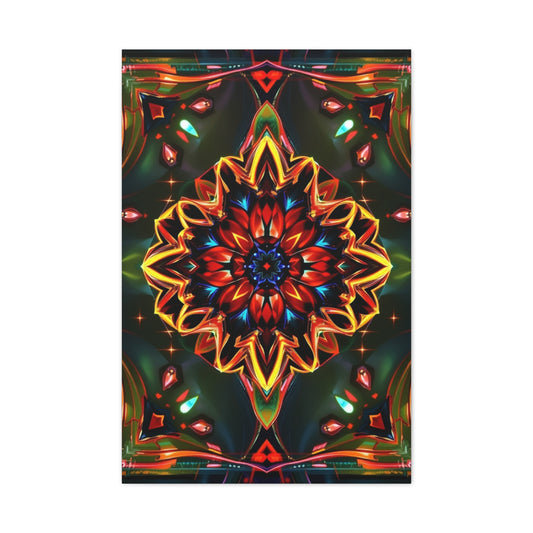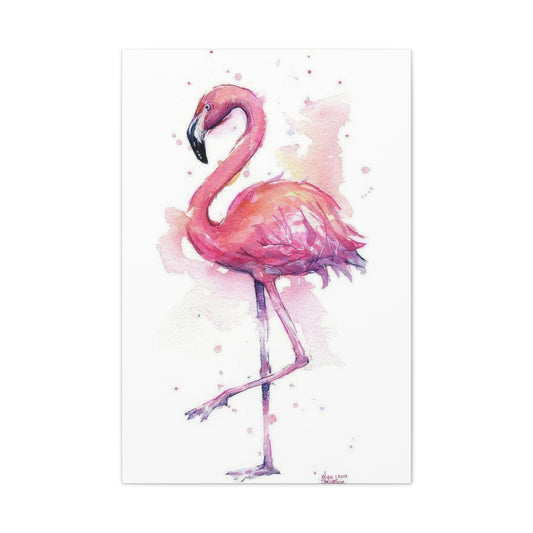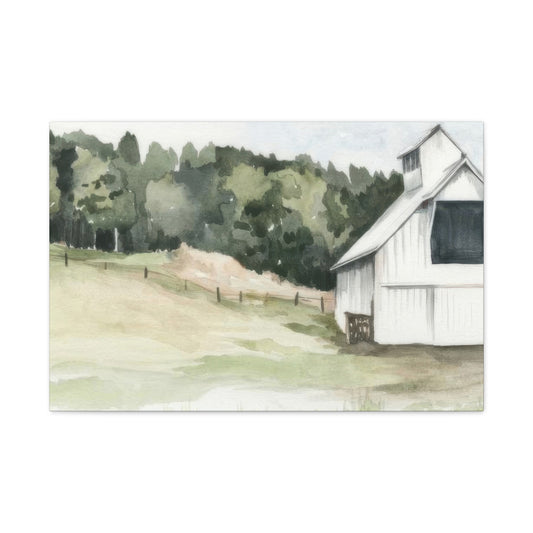The enduring charm of vintage aesthetics continues to captivate photographers, creatives, and audiences alike. In a world of ultra-sharp, high-definition digital imagery, there is something deeply poetic about the imperfection and emotion of retro photography. Vintage-style photography evokes a sense of history, memory, and romance. It transports viewers to another time, when photographs were more than pixels—they were tangible relics of a lived moment.
Whether you're using cutting-edge digital tools or experimenting with old-school film, here are ten thoroughly refined and imaginative techniques to infuse your photography with that unmistakable vintage character.
1. Embrace the Soul of Antique Cameras to Inspire Your Aesthetic
Capturing the vintage essence in your photography begins with more than just a preset or filter—it starts with understanding the very soul of the tools that shaped early photographic art. Vintage cameras, particularly those from the mid-20th century, were designed with limitations that inadvertently gave photographs a distinctive charm. These imperfections are now celebrated as hallmarks of authenticity, evoking emotion, character, and nostalgia.
Early analog equipment, especially the revered 35mm and medium-format film cameras, required photographers to engage in a more intentional, hands-on process. Manual focusing, fixed focal lengths, and low ISO capabilities defined their operation. These constraints forced artists to slow down, consider their composition meticulously, and truly connect with their subject and scene. The result was not sterile perfection, but an image steeped in sincerity and subtle imperfections that gave it life.
To channel this spirit in the digital age, choose your tools thoughtfully. Modern DSLRs or mirrorless bodies, particularly those with legacy lens adapters, offer a flexible platform for emulating vintage characteristics. Consider using vintage manual-focus lenses such as the Helios 44-2 or Canon FD series, which naturally produce swirly bokeh and soft edges—reminiscent of bygone eras. These lenses can be adapted to modern mounts, giving you a beautiful blend of digital control and analog aesthetics.
For purists, nothing beats the tactile ritual of a film camera. Investing in a classic 35mm SLR, a twin-lens reflex like the Rolleiflex, or even a Hasselblad medium-format system can open a world of photographic nostalgia. Film stocks like Kodak Portra, Ilford HP5, or Fujicolor C200 each carry their own color palette, grain texture, and tonal curve, all contributing to the final mood of the image.
One of the most poetic features of older film cameras is their preference for square or nearly-square formats. Unlike today’s default 3:2 or 4:3 aspect ratios, the square frame has a contemplative feel. It invites the viewer to linger longer, to examine composition in a balanced, centered way. Using this format—even on digital platforms—can immediately shift the perception of your work toward something timeless.
Lighting plays a crucial role in re-creating the aesthetic of early photography. Since old cameras often struggled in low light, consider shooting in soft natural light or using continuous light sources that mimic incandescent bulbs or candlelight. Harsh strobes tend to betray the vintage illusion unless modified extensively. Embrace gentle fall-off, warm highlights, and organic shadow gradients.
Texture also adds to the vintage effect. Film responds to grain differently than digital sensors. When editing modern digital images, avoid over-sharpening and instead introduce a subtle grain overlay, reduce contrast, and warm up the white balance to echo the tones of aged paper or faded prints.
Even your choice of shutter speed and aperture should be deliberate. Older cameras rarely exceeded 1/1000s shutter speed and many vintage images were shot at wider apertures due to low-light constraints. Try mimicking this by working with slower shutter speeds or shooting handheld to incorporate a slight motion blur—especially if you're capturing street scenes or dancing subjects.
Ultimately, embracing vintage photography is not about recreating history frame-for-frame; it’s about interpreting the past through a modern lens. It’s a dialogue between eras—a way to preserve the emotional resonance of analog photography while celebrating the flexibility and accessibility of today’s digital tools. When you start with respect for the heritage of early photographic instruments, your work gains not just aesthetic depth but cultural and emotional weight as well.
2. Stick to a Specific Time Period for Visual Harmony
One of the most captivating aspects of vintage-style photography is its ability to transport viewers across decades. But for that magic to truly resonate, your visual storytelling must be cohesive. Sticking to a specific historical era creates a sense of immersion, guiding your creative direction from lighting and wardrobe to props, poses, and color grading. This approach doesn’t just elevate the aesthetics—it transforms your work into a curated experience.
|
Related Catagories: |
Each decade brings its own visual language. The 1900s favored formal attire, restrained body language, and sepia tones. The roaring 1920s brought with it shimmering textures, dramatic makeup, and bold art deco backdrops. By the 1950s, photography embraced playful candidness, pop color palettes, and suburban optimism, while the 1970s oozed with warmth, rich grain, and a documentary-style spontaneity.
To replicate a period authentically, immerse yourself in its visual culture. Study portrait styles, popular fashion, architectural design, and common photographic practices of the era. Historical photographs, classic films, and archived magazines are treasure troves of inspiration. Look at the way light was used, how subjects interacted with the camera, and even the kinds of props and accessories that regularly appeared.
Mood boards can help solidify your creative vision. Use platforms like Pinterest or even physical collage boards to gather reference material. Pin examples of vintage hair styles, fabric patterns, furniture designs, and film stills that represent your target period. This pre-visualization process keeps your shoot focused and cohesive, helping you avoid anachronisms that could break the illusion.
Wardrobe plays a fundamental role in anchoring your photos in a specific era. Visit thrift stores, costume shops, or vintage boutiques to source authentic clothing. Don’t overlook the details—buttons, collars, shoe styles, and accessories such as hats, gloves, and eyewear all contribute to the realism of the final image. For a 1940s look, think tailored silhouettes and muted tones. If you're channeling the 1960s, go for bold prints, thick eyeliner, and teased hair.
Location scouting is just as vital. Seek out architectural backdrops that match your chosen era. Historic neighborhoods, retro diners, aged barns, or vintage cars can all become compelling stages for your shoot. Even interiors, like old libraries, parlors, or antique-filled kitchens, provide rich narrative context when used with care.
Posing and body language must also reflect the mood and mannerisms of the time. People in early photographs rarely smiled due to long exposure times, while 1960s portraits might feature experimental angles and offbeat expressions. Look at how men and women presented themselves—hands, posture, and gaze all tell a story. Mimicking these subtleties ensures authenticity and makes your image feel like a slice of preserved history.
Color grading is another dimension where historical accuracy can shine. Avoid high contrast or ultra-vibrant hues unless your chosen decade called for it. For early 20th-century styles, consider muted sepia tones or cool black-and-white conversions with reduced clarity. For 1970s aesthetics, introduce warm color casts, soft yellow highlights, and subtle vignettes. Post-processing can dramatically enhance or ruin the illusion—so tread thoughtfully.
The beauty of working within a defined period is that it provides both boundaries and creative freedom. With a clear reference point, your choices become more deliberate. You begin to design images rather than just take them. Even if you're working with digital tools, that careful intention and reverence for detail infuses your photographs with a spirit that feels authentic and timeless.
Vintage photography thrives on subtlety, continuity, and emotion. It’s not only about costumes and filters—it’s about understanding the cultural fabric of the time and weaving it into every aspect of your shoot. When done right, your work doesn’t just imitate the past; it becomes a visual echo of it, resonating with familiarity while offering something new and beautifully nostalgic.
3. Compose with Classical Precision to Evoke Nostalgic Aesthetics
When crafting vintage-inspired photographs, one of the most crucial artistic decisions lies in how you frame your subject. In the early days of photography, composition was not just an afterthought—it was the spine of the visual narrative. Unlike today’s trend-driven style, where rule-breaking and abstraction are often celebrated, vintage photography was rooted in discipline, clarity, and compositional harmony.
Classical layouts were governed by intention and a sense of balance. Photographers favored symmetry, linear alignment, and compositional guides such as the Rule of Thirds or the Golden Ratio. Horizon lines were level, subjects were centered or carefully placed according to proportion, and every element in the frame had a purpose. This meticulous approach created images that felt composed rather than captured—designed, rather than accidental.
To echo this in your own photography, begin by embracing stillness in your framing. Avoid high-tilt angles, erratic cropping, or aggressive lens distortions. Instead, aim for horizontality and vertical precision. Think about your subject’s placement not only in relation to the background but also in relation to the story you’re telling. The space around them isn’t negative—it’s narrative. Each shadow, texture, and line contributes to the overall emotion and setting.
Use architectural elements or natural features to lead the viewer’s eye. Doorways, windows, fences, and even tree branches can serve as natural frames or guiding lines that focus attention on your subject. In early portraiture, these visual cues subtly emphasized the presence and posture of the person being photographed without dominating the frame.
One hallmark of vintage photography was its fondness for visual order—clear spacing between subjects, stable verticals, and symmetrical backdrops. Even street scenes or family photos often followed this quiet logic. If a child stood beside a parent, they were usually aligned by height or clustered according to visual weight. Group portraits maintained equilibrium through arrangement, not randomness. That order, in turn, creates calmness in the image—a tranquility that speaks directly to the sensibilities of classical portraiture.
Consider the use of negative space as well. In the past, due to constraints in exposure and focus, photographers allowed ample breathing room in their compositions. This space allowed the subject to stand out while letting the background unfold gently behind them. Today, photographers can mimic this by resisting the urge to overfill the frame. Let the image breathe. Let light and space play their part. The result is often more emotionally resonant.
Additionally, avoid overly shallow depth of field that isolates your subject too aggressively. While modern lenses often celebrate bokeh as a sign of sophistication, excessive blur can make the image feel divorced from its environment. Vintage photography favored a more subtle separation between subject and background, with gradual depth transitions and softer edge definition. Aim for that middle ground—clear focus on the subject with just enough contextual clarity to ground them in their environment.
The golden charm of classical composition lies in its restraint. Instead of dramatic distortion or dramatic color contrast, it relies on timeless elements: line, proportion, space, and light. By returning to these foundations, your images not only feel authentically vintage—they gain the kind of structural elegance that transcends trend.
4. Harmonize Staged Elegance with Spontaneous Emotion
Early photography was a delicate dance between stillness and soul. The technical limitations of early cameras—slow shutter speeds, cumbersome gear, and long exposure times—meant that subjects had to remain completely still for extended periods. As a result, portraiture from the 19th and early 20th centuries appears formal, even stoic. Yet within those frozen moments lies an undeniable emotional weight—a quiet intimacy that has outlived its era.
As photographic technology evolved, the constraints of long exposures gave way to freedom of movement. This ushered in a new era of candid expression, particularly from the 1950s onward. The camera became smaller, faster, and more reactive. Photographers could now capture laughter, gestures, fleeting glances—unscripted slices of life that carried a raw, emotional resonance.
Modern vintage-style photography can—and should—draw from both of these traditions. Begin your portrait session with deliberate, staged compositions. Guide your subject into formal poses that channel the stillness of yesteryear. Ask them to hold eye contact, sit upright, and keep their posture strong. Emphasize the timeless gestures: folded hands, seated poise, a gentle turn of the head. Encourage subtlety in their expression, like a soft gaze or restrained smile, reminiscent of daguerreotype-era portraits.
Then, when the stage is set and the tension eases, allow spontaneity to emerge. Prompt your subject to laugh, shift their weight, or interact with an object or person nearby. These transitional moments are golden—where the composed melts into the candid. Capture the in-between expressions: a break in the smile, a raised eyebrow, a genuine laugh. These moments are unscripted yet deeply human, and they bring your image to life.
This dual approach—beginning with formality and allowing emotion to unfold—yields portraits rich in both structure and sincerity. You’re not just documenting a face, but revealing character. The formality pays homage to the disciplined aesthetics of early photography, while the candidness echoes the unguarded joy that became popular as cameras became more accessible.
You can also play with posing as a storytelling device. For example, in a group portrait inspired by the 1940s, you might begin by arranging your subjects in strict rows or a pyramidal structure. Once the basic composition is locked, invite them to engage with one another—share a joke, mimic a dance move, or react to a question. Those interactions can infuse your image with motion and memory, bridging the visual gap between past and present.
When guiding your subject, speak in the vocabulary of the era. Referencing cultural cues—“Strike a movie-star pose from the '30s” or “Think of a family portrait from the '50s”—can help your subject embody the role more naturally. This immersive direction also enhances the authenticity of the final image, especially when paired with appropriate wardrobe and styling.
Lighting can also influence the tone of a staged vs. spontaneous moment. Use directional window light or soft tungsten bulbs to set a quiet, nostalgic mood for your posed shots. For spontaneous captures, slightly overexpose or introduce motion blur to enhance the feeling of immediacy and imperfection—a stylistic echo of street photographers like Henri Cartier-Bresson.
The beauty of blending these approaches lies in their synergy. One captures the external poise; the other captures the internal spark. Together, they result in portraits that are not just technically sound or visually stylish, but emotionally resonant. They pay tribute to history while allowing the present to speak.
5. Master Depth of Field to Infuse Vintage Character
One of the most evocative tools in the vintage photographer’s arsenal is depth of field—the creative manipulation of focus to tell a deeper story. In vintage photography, depth wasn’t just technical; it was emotional. Whether born from optical constraints or intentional artistry, the way photographers historically treated focus can be emulated today to amplify the nostalgic tone of your images.
In the golden era of film, especially between the 1920s and 1970s, the tools photographers used often dictated how much of the scene could be sharply rendered. Manual lenses paired with low-light film stocks often produced portraits with soft backgrounds and subtle focus falloff. Today, this characteristic remains a staple of vintage aesthetic photography and can be controlled using your aperture settings, lens choices, and focusing techniques.
Start with lens selection. Vintage lenses inherently produce less clinical sharpness than today’s ultra-precise optics, and this "imperfection" contributes greatly to their appeal. Older lenses often add a natural softness, reduced contrast, or even a dreamy halo effect when used wide open. If you’re working with modern digital equipment, consider using legacy lenses via adapters—brands like Minolta, Pentax, or Zeiss from the 1960s or '70s provide a subtle, organic rendering that modern glass rarely replicates.
Once you’ve chosen your lens, experiment with aperture to sculpt your depth of field. A wide aperture such as f/1.4 or f/2 will isolate your subject with velvety background blur—an ideal look for romantic, portrait-style shots reminiscent of old Hollywood headshots or softly lit studio photography from the early 20th century. This separation between subject and background introduces a painterly quality that’s deeply nostalgic.
|
Related Catagories: |
For a completely different vintage effect, try narrow apertures like f/8 to f/16, which increase your depth of field and bring the entire scene into sharper relief. This technique harks back to large-format photography, where landscape and environmental portraiture required edge-to-edge clarity. It’s a style found in Depression-era photography or mid-century travel imagery, where context was as important as the subject.
Perhaps most uniquely, consider “imperfect” focusing as an artistic choice. Allow the focus to fall slightly in front or behind your subject—not as a mistake, but as an intentional gesture. This softens the image and adds an almost dreamlike quality, evoking the sense of memory or distance often associated with archival prints. Manual focusing heightens your engagement with the subject and allows for nuanced results that autofocus can’t replicate.
Also, pay attention to distance and framing. Bringing your subject closer to the lens while keeping the background textured and detailed lets the shallow focus blend modern and vintage in one composition. Conversely, stepping back and using a higher f-stop flattens the image just slightly—a common trait in vintage postcard photography or archival group portraits.
Additionally, shooting through textured elements—like lace curtains, dusty glass, or foliage—can enhance the sense of layered depth and visual nostalgia. These natural filters diffuse light and focus subtly, reinforcing the softness characteristic of old film imagery.
When paired with appropriate lighting—preferably natural or soft tungsten—and muted color grading, thoughtful manipulation of focus and depth of field can transform your digital photo into a heartfelt homage to eras past. It’s not about achieving technical perfection; it’s about guiding the eye and evoking a mood that resonates with memory, atmosphere, and authenticity.
6. Find Poetry in Imperfection: The Art of Vintage Flaws
In the highly edited, pixel-perfect culture of modern photography, vintage aesthetics offer a poetic counterpoint—one that embraces imperfection, celebrates the unpredictable, and finds beauty in the flaws. In earlier eras, every photograph came with a risk: scratched negatives, accidental light leaks, uneven exposure, or chemical inconsistencies. But these artifacts didn’t diminish the photo—they became part of its soul.
In fact, one of the most alluring traits of authentic vintage photography is its tactile, unpolished texture. Dust, grain, and aging paper added layers of character to every image. These were not errors to be corrected—they were the fingerprint of a lived moment. Today, replicating these organic anomalies can elevate your work from digital crispness to something far more evocative and timeworn.
To start embracing imperfection, begin during the shoot—not just in post-processing. Allow lens flares to enter the frame, especially during golden hour. Backlight your subject slightly off-axis to produce natural glow and contrast washout. You can also smear a very thin film of Vaseline on a UV filter (not directly on your lens) to recreate the smudged softness of worn lenses. Even using expired film, or lower-grade vintage lenses, can generate unexpected quirks that enhance the nostalgic mood.
Color inaccuracies can also work in your favor. Vintage photographs often exhibited strange color shifts—reds leaning magenta, greens fading toward cyan, or highlights blooming. Rather than correcting white balance to clinical perfection, leave slight warmth or coolness to suggest the aging of chemical prints or early color film limitations.
In post-processing, simulate authentic vintage damage to bring your images full circle. Add grain—not the sterile digital kind, but textured overlays that resemble real emulsion particles. Introduce light leak textures that replicate the bleed of sunlight through a faulty film door. Incorporate faded edges, vignetting, and even paper textures to mirror the physical degradation of an old photo left in a drawer for decades.
Another unique element is the emulation of analog printing flaws. When film was developed manually, uneven application of chemicals could result in blotches or banding. Photographers today can mimic this effect using brush tools or overlays that imitate watermarks and developer stains. The key is restraint—these elements should enhance the mood, not overwhelm the composition.
Blown-out highlights or motion blur—often seen as digital errors—can also become vintage virtues. Overexposure on faces, the glow of a bright sky, or even a ghostly silhouette can stir emotion and mystery. Slight camera shake or slow shutter-induced blur is reminiscent of early handheld snapshots, especially in candid street scenes or spontaneous moments.
The message these imperfections carry is powerful: life isn’t sterile or staged. It’s messy, unpredictable, and often beautifully unfiltered. That authenticity is what vintage photography captures so well—and why replicating its imperfections with sincerity can lead to emotionally rich and visually compelling images.
It’s important to remember that imperfection doesn’t mean carelessness. Every “flaw” you include in your image should be chosen with intention. Like brushstrokes in an impressionist painting, the scratches, dust, light leaks, and grain contribute to the overall composition and mood.
In many ways, allowing imperfections into your vintage-inspired photography is a quiet rebellion against modern perfectionism. It’s a return to seeing photography as a craft, not just a process—a medium with soul, rather than a polished product. These flaws become the signature of your visual voice, and a reminder that memory, like film, is often faded, fragmented, and achingly beautiful.
7. Add a Gentle Finish for a Softer, More Timeless Look
In an age defined by digital perfection—where every pixel is polished and every highlight calibrated—true vintage photography whispers with softness. Its emotional weight lies not in precision, but in a subdued elegance that feels lived-in and eternal. If your goal is to evoke the atmosphere of another era, the post-processing finish you apply to your image is where much of the vintage mood is truly cultivated.
Modern sensors and software prioritize sharpness, contrast, and hyperrealism. While this may suit commercial and editorial work, it clashes with the gentle visual poetry of retro aesthetics. Instead, aim to dial down clarity and shift your tonal palette toward something quieter. Begin by reducing contrast—not just globally, but selectively. Pay attention to the darkest blacks and brightest whites, softening both ends of the tonal spectrum. This creates a hazier, more romantic feel reminiscent of older prints that have faded gently over time.
One of the most iconic techniques for achieving a vintage finish is the application of a matte effect. By subtly lifting the black point in your curves adjustment, you reduce deep shadows into a muted gray, giving your image a dreamy, washed-out quality. This effect mimics the characteristics of old print paper and chemical limitations, which were unable to reproduce the inky depths of today’s blacks. It introduces air into the photo—an echo of memory rather than a record of exactness.
Vignetting also plays a key role in guiding the viewer’s eye. In vintage photography, natural lens fall-off and limited coverage often resulted in darkened edges that subtly centered attention. Emulate this by applying soft, radial vignettes to the corners of your image. Keep it subtle—just enough to add visual focus without making the effect feel forced.
Color grading is the emotional language of post-processing. Vintage color palettes leaned away from vivid vibrancy and toward desaturated, earth-toned hues. Reduce saturation, especially in blues and greens, and introduce warmth to your highlights. Reds should bleed slightly into oranges, greens can lean toward olive, and shadows often benefit from a gentle amber or sepia tint. Skin tones should be handled with care—natural and soft, leaning pastel rather than saturated.
Explore split toning or the newer color grading wheels found in most editing software to fine-tune shadows and highlights independently. For instance, you might warm up the highlights with a golden tint while cooling the shadows with a soft teal, echoing the cinematic grading styles of mid-century films.
Textures within the image—such as fabric, wood, or skin—should feel tactile but not overly sharp. Avoid using clarity or texture sliders aggressively. A photograph that feels too crisp loses the softness that defines vintage visual storytelling. Grain, when applied carefully, can reintroduce that texture without becoming noisy. Opt for film-style grain that varies in size and distribution across highlights, midtones, and shadows.
Equally important is the restraint you show during this process. Vintage-style editing is not about adding filters—it’s about subtracting distractions. Your final image should feel like it’s been unearthed from a forgotten album or pulled from the folds of time, not created by toggling sliders to their extremes.
In the end, applying a gentle finish is about creating resonance. It's not just a visual technique—it’s a tonal signature. It invites the viewer to slow down, to reflect, and to feel. That emotional stillness, suspended in softness, is what transforms a modern photograph into a timeless memory.
8. Use Editing Tools Thoughtfully to Recreate Film Magic
While capturing the essence of vintage photography begins in-camera, the transformation is completed in post-production. Modern editing software has gifted photographers with immense creative power, but when chasing a nostalgic aesthetic, this power must be wielded with subtlety, not spectacle. Thoughtful editing is what turns a sharp, modern image into something that feels cinematic, tangible, and steeped in the tones of history.
Begin with intention, not presets. Before you touch a slider, ask yourself: What era am I channeling? What film stock am I emulating? What emotional response am I seeking? These answers will shape how you approach every step of the editing process.
Lightroom, Photoshop, and comparable platforms like Capture One offer the basic tools necessary to replicate vintage moods. But it’s not the tools themselves—it’s the way you apply them. Avoid the temptation to lean heavily on dramatic presets. Instead, use presets or LUTs as a starting point, then refine them meticulously. Think of editing as a process of delicate layering, not digital dressing-up.
To replicate the tonal behavior of film, begin with your curves. Adjust the contrast curve to reduce dynamic range—old film stocks were not known for their high contrast. Lift your shadows slightly, soften highlights, and compress midtones gently. This brings back the flatness and quietness of traditional silver gelatin prints.
Color manipulation is another essential facet. Old film stocks like Kodak Portra, Fuji Superia, or Agfa Vista each had unique color profiles. For example, Portra offered warm skin tones and subtle pastel hues, while Superia leaned slightly toward magenta and cool shadows. Explore online resources or reference scans of actual negatives to guide your adjustments.
For those seeking even more accurate simulation, dedicated film emulation software offers a level of nuance that standard editing programs often lack. Tools like DxO FilmPack, Exposure X, or even Dehancer offer faithful reproductions of specific film stocks, including grain structure, color response, and tonal behavior. These programs analyze how light reacts on actual emulsions and translate those subtleties into a digital workflow. It’s an extraordinary way to bring analog soul into a digital frame.
Another important element is the incorporation of texture and physicality. Digital images are inherently clean. Film, by contrast, lives in imperfection. Overlay authentic film grain—different from digital noise—and experiment with textures such as scratches, dust, light leaks, or frame borders. These additions can transform a clean image into something that feels aged and organic. Ensure these overlays match the resolution and orientation of your image for the most realistic effect.
Beyond grain and color, consider incorporating edge softness, halation (the glow around highlights), or chromatic aberration to mirror how old lenses rendered light. These details are often overlooked but are essential in recreating the immersive quality of analog photography.
One of the lesser-known yet powerful editing practices is reducing digital sharpness. While sharpness has its place, vintage imagery often embraced softness—whether due to manual focus errors or lens limitations. Slightly decreasing sharpness and adding noise can mask the unnatural precision of modern sensors and restore a more authentic analog texture.
Above all, use editing to support your vision, not overshadow it. The most compelling vintage-style photographs are those where the editing disappears—where the viewer is transported, not distracted. It’s the illusion of time travel, built through choices that evoke rather than announce.
9. Reimagine Monochrome and Sepia Color Palettes for Timeless Storytelling
Color is emotion. But in the world of vintage photography, sometimes the most powerful emotion comes from its absence—or from the subtlety of a single, aged tone. Monochrome photography, particularly in black-and-white or sepia, has long been revered for its ability to distill an image down to its most essential elements: light, shadow, form, and soul.
Black-and-white photography isn’t simply the act of stripping color—it’s a deliberate transformation of your visual narrative. To do this effectively, you must engage with the black-and-white process as its own artistic medium. Don’t just hit “desaturate” in your editing software; instead, convert your image using channel mixing or black-and-white adjustment layers. These tools allow you to manipulate how individual color channels convert to gray tones. For example, adjusting how red translates to gray can dramatically affect the look of skin tones, while tweaking the blues and greens can alter skies and foliage. This kind of control helps you shape the visual tone and drama of the scene.
In vintage portraiture, black-and-white was often used not only due to technological limitations, but because of its striking emotional clarity. Without the distractions of color, the viewer is drawn into the subject’s gaze, the textures of the clothing, the interplay between light and surface. The best monochrome images feel sculptural, like shadow and light are being carved directly from time itself.
Equally rich in nostalgia is the sepia palette—those warm, golden-brown hues that echo through antique albums and archival prints. The sepia tone originated from a chemical treatment used to increase the longevity of silver-based photographs. What began as preservation soon became a stylistic signature, synonymous with turn-of-the-century imagery and early family portraits.
To recreate this effect in a modern workflow, use split toning or color grading tools to tint your shadows and highlights subtly. For a traditional sepia look, assign warm golds or rust-browns to your darker areas and keep the highlights neutral or slightly peach-toned. Avoid oversaturating the effect; vintage sepia is never loud—it glows quietly, like sunlight filtering through old lace curtains.
Advanced photographers may also explore LUTs (Look-Up Tables) designed specifically to emulate aged monochrome prints or historic emulsions. These LUTs can introduce tonal curves and subtle color casts that mirror the behavior of early photo chemicals, enhancing your digital work with analog soul.
Another effective technique is adding texture overlays to mimic the grain and wear of paper. Consider importing scanned elements like faded edges, paper fibers, or handwritten notes, all of which reinforce the illusion of a found object rather than a freshly minted file.
Finally, think about subject matter. Monochrome or sepia tones pair beautifully with timeless themes: portraits, old architecture, weathered objects, and landscapes cloaked in fog. These subjects lend themselves to quiet storytelling, where mood and memory take precedence over bold color.
When executed with care and intention, black-and-white and sepia-toned photography do more than look old—they feel historic. They slow time, draw focus, and carry with them the emotional gravity of stories preserved in amber.
10. Use Period-Appropriate Wardrobe and Authentic Settings for a Complete Vintage Illusion
No matter how meticulously you frame, light, and edit your photograph, nothing betrays the illusion of time travel faster than a misplaced detail. In vintage-style photography, achieving a believable aesthetic hinges on more than just editing—it requires curating the entire world within your frame. That means paying obsessive attention to both wardrobe and location to ensure everything aligns with the era you seek to evoke.
Clothing acts as the first visual clue to the time period you're referencing. It sets the emotional temperature of your image before the viewer even notices the subject’s expression. To build an authentic look, research your chosen decade’s silhouettes, fabrics, and accessories. For a 1940s portrait, think structured suits, pin curls, and bold lips. For a 1970s street scene, go for flared pants, earth tones, and natural textures. Every element—from buttons to lapels to the type of shoe—must serve the narrative.
Avoid mixing eras or incorporating modern garments, unless you're deliberately creating a contrast. Small details like visible zippers, contemporary logos, or synthetic fabrics can shatter the illusion. Stick to natural fibers like wool, cotton, and linen for their authentic texture and drape. Incorporate accessories like gloves, hats, suspenders, or silk scarves to enrich the story.
Makeup and hair styling must also be era-consistent. Whether it’s the polished waves of the 1920s, the soft glam of the 1950s, or the sun-kissed naturalism of the 1970s, these finishing touches help ground your portrait in the intended time period. There’s a delicate artistry in transforming your model into a figure who might have existed decades ago, and it’s often these final details that make or break the illusion.
But the wardrobe is only one side of the story. The setting is equally essential. Seek out locations that echo the architecture, materials, and ambiance of past decades. Old train stations, colonial-era homes, weathered barns, cobbled streets, and vintage diners offer ready-made authenticity. Even overlooked places like staircases, alleys, or dimly lit parlors can evoke a strong historical mood with the right angle and light.
Natural environments also lend themselves beautifully to vintage aesthetics. Open fields, dense forests, and winding country roads have an ageless quality that transcends eras. These settings work especially well when paired with wardrobe that contrasts or complements the scenery—a Victorian dress against an autumnal landscape, or a 1960s overcoat in a snow-covered village.
Props are the final touchstone. Introducing era-appropriate objects like rotary phones, aged suitcases, vinyl records, or typewriters can instantly enhance narrative credibility. Furniture, too, adds dimension—wicker chairs, clawfoot tubs, wooden desks, and upholstered armchairs all carry rich historical resonance. Keep modern distractions out of frame—no plastic water bottles, wristwatches, earbuds, or smartphones should sneak in unnoticed.
If you’re working in a digital age where authenticity is challenging to find, consider building your scene from thrifted items, estate sale finds, or rental houses that specialize in period props. Even modest details—an embroidered pillow, a stack of yellowed books, a chipped enamel teacup—can breathe life into your visual narrative.
Lighting should complement your setting. Use window light, soft tungsten bulbs, or practical lamps to create ambient warmth. Avoid harsh flashes or overly bright LED sources unless you're mimicking vintage studio lighting with softboxes or diffusion.
Ultimately, your success in vintage photography hinges on consistency. Each visual choice—from the cut of a dress to the wear on a table’s surface—should support the time period and atmosphere you're evoking. When all elements harmonize, the viewer doesn’t question the image’s origin—they feel transported. They believe in the world you've created.
Final Reflections: Photographing with Sentiment, Not Just Style
At its heart, vintage-style photography is not about mimicking the past—it’s about honoring it. It's about slowing down, observing with intention, and photographing not just how something looks, but how it feels. Through deliberate styling, technical experimentation, and thoughtful storytelling, you can create images that evoke emotion and memory.
Every scratch, every muted color, every grain of light is a bridge between eras. Whether you're drawn to sepia-tinted romances, noir-style portraits, or 1970s candid snapshots, your vintage imagery should carry your fingerprint and your soul.
So explore the cracks in the lens, listen to the stories hidden in the shadows, and let nostalgia be your guide. The result will be more than a photograph—it will be a piece of living memory, frozen in time.








